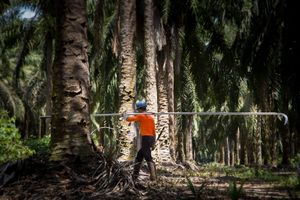My family used to take road trips to Malaysia when I was growing up, and I can clearly remember the first time I noticed the oil palms. They were unlike anything else in the landscape, which up to that point had been a patchwork of jungle, paddies, billboards, and the occasional roadside stand selling steamed sweet corn. The palms were distinctive, their dense crowns dark and heavyset atop sawtooth trunks, but what caught my eye was how these trees, unlike the other trees, had obviously been organized. When I asked my parents what they were, they said, “these are oil palms, which people plant to make money.”
Read the full story
The rest of this post is for SOW Subscribers (free or paid) only. Sign up now to read the full story and get access to all subscriber-only posts.
Sign up now

